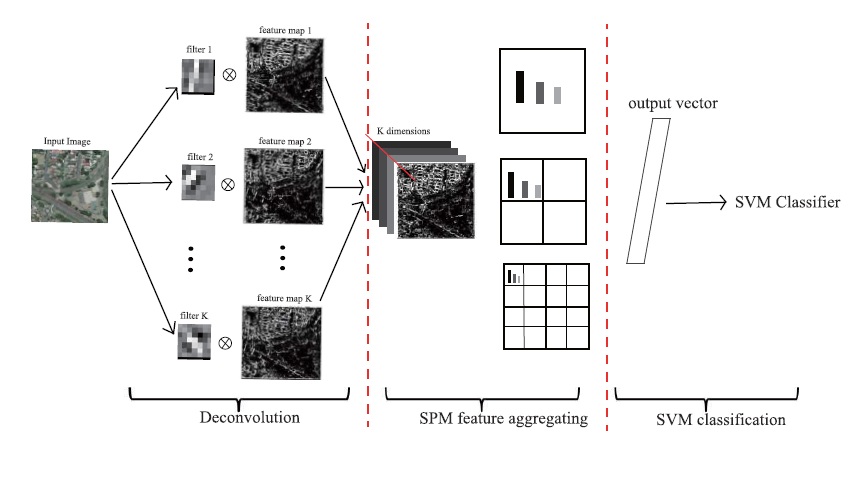- ALL COMPUTER, ELECTRONICS AND MECHANICAL COURSES AVAILABLE…. PROJECT GUIDANCE SINCE 2004. FOR FURTHER DETAILS CALL 9443117328


Projects > ELECTRONICS > 2017 > IEEE > DIGITAL IMAGE PROCESSING
With the rapid development of the satellite sensor technology, high spatial resolution remote sensing (HSR) data have attracted extensive attention in military and civilian applications. In order to make full use of these data, remote sensing scene classification becomes an important and necessary precedent task. In this paper, an unsupervised representation learning method is proposed to investigate deconvolution networks for remote sensing scene classification. First, a shallow weighted deconvolution network is utilized to learn a set of feature maps and filters for each image by minimizing the reconstruction error between the input image and the convolution result. The learned feature maps can capture the abundant edge and texture information of high spatial resolution images, which is definitely important for remote sensing images. After that, the spatial pyramid model (SPM) is used to aggregate features at different scales to maintain the spatial layout of HSR image scene. A discriminative representation for HSR image is obtained by combining the proposed weighted deconvolution model and SPM. Finally, the representation vector is input into a support vector machine to finish classification.
Multitask Topological Codebook, Wavelet Transformation, Semantics-Preserving Hashing.
In this paper, a novel unsupervised feature learning method for HSR image scene classification is proposed. The main characteristics of HSR images are that HSR scenes cover a much wider ground surface and the object distribution is very complex. The proposed method considers these characteristics adequately and utilizes a weighted deconvolution model to learn the feature maps from data itself, with each feature map carrying parts of the edge information of HSR image. Furthermore, the applying of SPM on these feature maps can aggregate features at different scales and preserve the spatial layout of HSR image. The proposed method obtains a precise and discriminative representation by combining the weighted deconvolution model and SPM. As an alternative to handcrafted features, the proposed unsupervised feature learning alleviates the classifying difficulties brought by the interclass similarities and complex distributions in HSR images. Besides, the weights are attached to different filters to balance their contributions. Moreover, a small number of filters improve the efficiency of the proposed method.
BLOCK DIAGRAM
